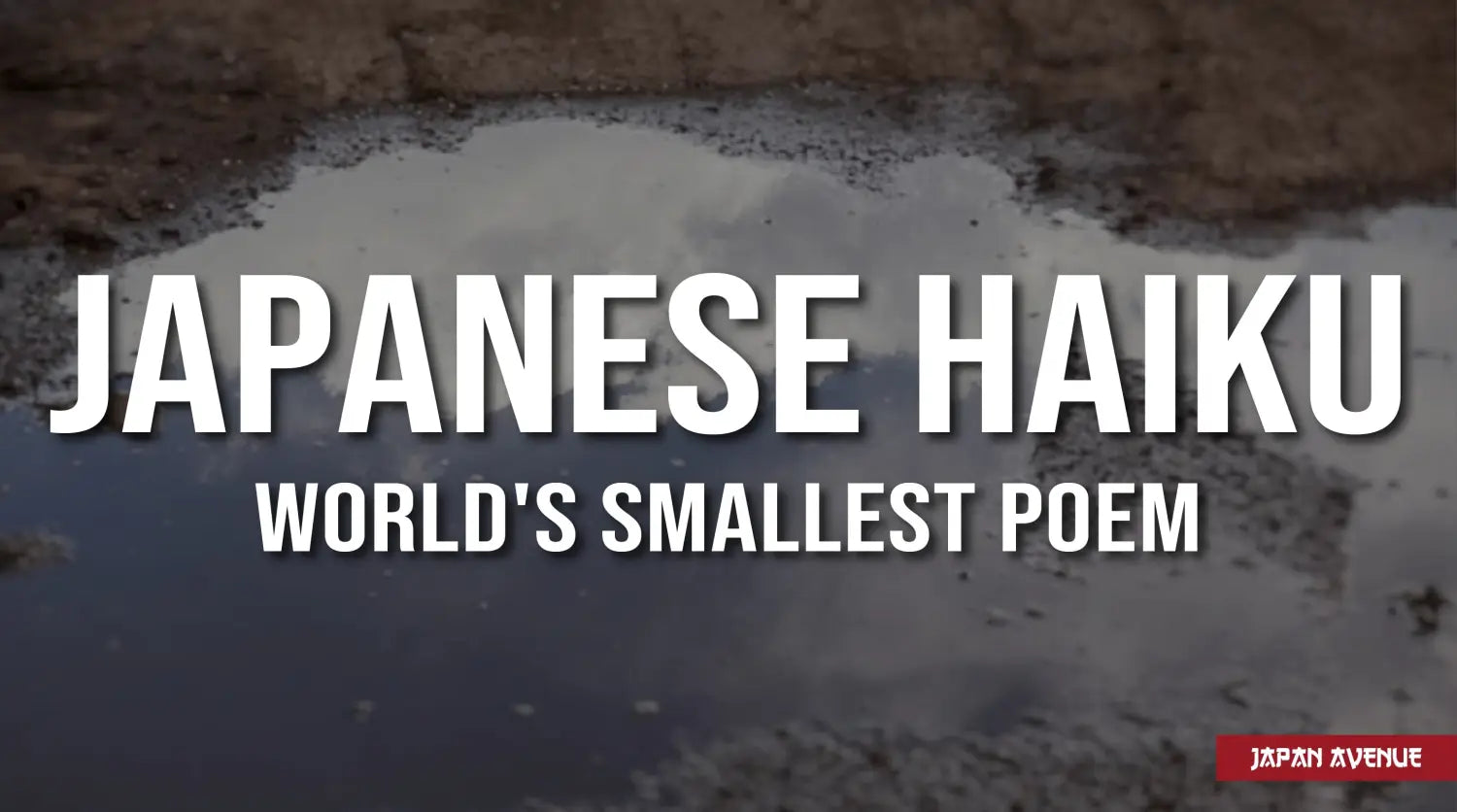Japanese art, combining elegance and sensitivity, is a well of poetry that carries us to new horizons. Whether it is engraving, calligraphy, ceramics, ikebana... or even theater, the Japanese style fascinates the whole world.
The Japanese haiku is a very short poem of 17 syllables, which immortalizes a moment and the emotion which emerges from it. A true hymn to life, the haiku celebrates the impermanence of things. The contrasts and particularities of this poetry form makes it a unique art in Japanese literature.
Let's focus on the world's smallest poem!
☝️What are the particularities of the haiku?

First, let's decode the characteristics of this particularly concise Japanese poem. What is a haiku?
✅ A 17-syllable poem
In Japan, the traditional structure of a haiku consists of 17 mores (elemental sounds) calligraphed in a single verse. In the western transposition, this gives a format of 17 syllables divided into 3 verses. Either 5 syllables for the first line, 7 for the second and 5 for the last.
✅ The kigo to remind the season
A Japanese haiku always includes a kigo, which is a word about the season. This can be explicit (winter, summer) or an implicit expression such as "dead leaves" as a metaphor for autumn or "swallow" for a spring haiku.
✅ The kireji to separate two images
This form of poetry includes a caesura (kireji) to provide relief between complementary or opposing elements. The hyphenation separates two ideas to create a crack or a punchline and thus surprise the reader.
✅ An absolute simplicity
The haiku must be understandable to everyone while at the same time conveying the idea of depth and simplicity. This, through a total mastery of the language and the art of suggestion.
✅ A meditative poem
More than a Japanese poem, the haiku is an invitation to meditation, we find themes such as the passing of time, melancholy, awareness of nature, timelessness. Similarly, this poetic genre appeals to the five senses (smell, sight, hearing, touch, taste) to evoke emotions.
💡 Who invented the haiku?

Note from a haiku exchange on kaishi stationery by matsuo basho, 1694.
The origins of this traditional Japanese poem go back to the Heian period, at the end of the 8th century. The ancestor of haiku would probably be the tanka, a short poem of similar structure, evoking nature and season. It was not until the Edo period that this poetic genre became popular.
🐣 The precursor genres of haiku
In the 16th century, haikai renga was a classical form of poetry inherited from tanka and practiced by aristocrats. At that time, it was about composing a collective poem using humor and wit.
👴 Basho Matsuo, the father of the haiku
During the 17th century, the haiku was democratized and codified in its current form by the renowned poet Basho Matsuo who took from the haikai renga only the first verse (hokku). The saucy nature was abandoned in favor of subtlety. It was then that this form of short poetry became a distinct genre in Japanese literature.
👨🦲 Shiki Masaoka, renowned haikist
While the haiku has been around for a very long time, its name, a shortened form of "haikai no hokku" was only coined in the 19th century by Shiki Masaoka. Note that this famous Japanese poet and theorist would be the author of nearly 25,000 haiku! 😯
✍️ How to write a haiku in English?

In Japan, the art of haiku counts many practitioners. Writing poems inspired by nature is very popular in Mastuyama (Ehime), Shiki's birthplace. In this place, we even find special mailboxes to deposit your haiku. And of course, the most beautiful literary works are displayed in the city.
Do you have the soul of a poet or simply a certain artistic sensitivity? Why not write your own haiku? Find out how to find inspiration and respect the poetic codes of the perfect haiku.
🦋 Finding inspiration
First of all you'll need to find something to get inspired by. Take a walk in nature and let your emotions, your senses guide you. Take inspiration from the flora and fauna, the seasons, the materials, the objects that surround you. Capture the fleeting nature of things.
👩🎨 Syllabic composition
After the substance comes the form. In Western countries, haiku consists of 3 verses with a 5/7/5 syllabic structure.
- The first verse has 5 syllables
- The second verse has 7 syllables
- The last verse has 5 syllables
🍂 Seasonal word kigo
In this literary genre of Japanese poetry, a seasonal word is always included. This can be the name of the season or a metaphor like sunflower for a summer haiku or snow for a winter haiku.
✖ Hyphenation (kireigi)
The haiku form includes a caesura. A hyphen or capital letter is used at the beginning of the word that breaks the two ideas.
Finally, keep in mind that the purpose of haiku is to capture the emotion and ephemerality of the present moment.
« In short, a good haiku is three lines to contain the essence and suggest the rest! »
💟 Famous Haikus to find inspiration
Now that this little traditional Japanese poem has no more secrets for you, you may want to read some? Matsuo Basho, Yosa Buson, Kobayashi Issa, Masaoka Shiki are considered the four masters of haiku. They wrote many poems and moved the whole world. Aesthetics, sobriety, humor, spirituality... Here are some famous Japanese haiku for you to get inspired.





The smallest poem in the world is quite surprising. Know that if you write a Japanese haiku, these 3 magic lines will immortalize your happiness and suspend time...



